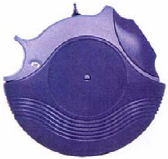Glaxo Wellcome UK Ltd (t/a Allen & Hanburys) and Another v Sandoz Ltd
| Jurisdiction | England & Wales |
| Judge | His Honour Judge Hacon,Judge Hacon |
| Judgment Date | 28 June 2016 |
| Neutral Citation | [2016] EWHC 1537 (Ch) |
| Court | Chancery Division |
| Docket Number | Case No: HC-2015-005005 |
| Date | 28 June 2016 |
[2016] EWHC 1537 (Ch)
IN THE HIGH COURT OF JUSTICE
CHANCERY DIVISION
INTELLECTUAL PROPERTY
Royal Courts of Justice, Rolls Building
Fetter Lane, London, EC4A 1NL
His Honour Judge Hacon
(SITTING AS A JUDGE OF THE HIGH COURT)
Case No: HC-2015-005005
Daniel Alexander QC and Simon Malynicz QC (instructed by Stephenson Harwood LLP) for the Second Claimant
Martin Howe QC and Iona Berkeley (instructed by White & Case LLP) for the Defendant
Hearing date: 15 June 2016
Approved Judgment
I direct that pursuant to CPR PD 39A para 6.1 no official shorthand note shall be taken of this Judgment and that copies of this version as handed down may be treated as authentic.
Introduction
This is an application by the defendant ("Sandoz") for summary judgment in its counterclaim for a declaration that EU Trade Mark No. 3890126 ("the Trade Mark") is invalid. The Trade Mark is owned by the second claimant ("Glaxo"). By extension the application also seeks summary judgment dismissing Glaxo's claim against Sandoz for infringement of the Trade Mark.
The ground of invalidity relied on is that the Trade Mark does not conform to the requirements of art.4 of Council Regulation (EC) 207/2009 ("the Trade Mark Regulation") in that it is neither a sign nor capable of being represented graphically, within the meaning of that article.
Sandoz seek to invalidate the Trade Mark on further grounds; Glaxo have also brought a claim for passing off against Sandoz. These form no part of the present application.
The Trade Mark
The Trade Mark is registered in respect of 'Inhalors' (sic) in Class 10. The visual representation of the mark is this:

The description of the Trade Mark in English is:
"The trade mark consists of the colour dark purple (Pantone code 2587C) applied to a significant proportion of an inhaler, and the colour light purple (Pantone code 2567C) applied to the remainder of the inhaler."
The certificate of registration designates the Trade Mark with the INID code number '558'. 'INID' is the acronym for 'Internationally agreed Numbers for the Identification of (bibliographic) Data'. It is part of a coding system developed by the World Intellectual Property Office ("WIPO"). I was shown extracts from WIPO's Handbook on Industrial Property Information and Documentation which reveal that INID code 558 is one of the codes that provides a description of the elements of the mark. 558 means:
"Mark consisting exclusively of one or several colors"
It was common ground that this was the meaning of code 558 at the time the Trade Mark was registered, and indeed it still is.
The arguments in summary
Martin Howe QC who, with Iona Berkeley, appeared for Sandoz, pointed out that this was clearly not a figurative mark, so guidance as to what was claimed came from the description. The description showed that the Trade Mark registered was not a single sign but a collection of an almost limitless number of signs. Each of the signs had to consist of dark and light purple sections, of the correct Pantone shades, and dark purple has to be applied to a significant proportion of the inhaler. Otherwise there was complete freedom. The sign could be overwhelmingly dark or light purple or anything in between. The light purple section did not even have to be a significant part of the inhaler. Furthermore, there could be any kind of pattern created by shapes of dark purple on a light purple background (or vice versa) – stripes, dots, stars, or anything else.
Mr Howe referred me to authority, to which I will return, and submitted that in consequence of the wide variety of signs encompassed by the Trade Mark as registered, the Trade Mark was neither a sign nor capable of being represented graphically. The registration was therefore invalid.
Daniel Alexander QC who, with Simon Malynicz QC represented Glaxo, accepted that if Mr Howe was right about the interpretation of the Trade Mark, it was invalidly registered. But, Mr Alexander submitted, Mr Howe had wrongly construed the registration. He said that the visual representation of the Trade Mark was the starting point. It was apparent from the registration that this was not a figurative mark, so plainly the sign being claimed was an abstraction of that visual representation. The abstraction looks like this:

It comes from the written submissions on behalf of Glaxo in litigation involving the Trade Mark in a number of EU countries and before the EU Intellectual Property Office ("EUIPO"). A witness statement of Dr Anke Nordemann-Schiffel, partner in the Berlin law firm Boehmert & Boehmert, reproduced sections of these written submissions. (I asked why so many related actions were running in parallel given the provisions of art.104 of the Trade Mark Regulation. I was told that the matter has been given consideration in the High Court of Ireland at least, where it was concluded that there are 'special grounds' within the meaning of that article: see Glaxo Group Ltd v Rowex Ltd [2015] IEHC 368, Barrett J).
Mr Alexander's point in summary was that on a correct interpretation of the registration, a single sign had been validly registered. By way of an alternative argument, to the extent that it might be said that the Trade Mark encompassed more than one sign, the variants within the registration formed a much narrower group than suggested by Mr Howe. These were variants of a single sign and such variants were permitted as a matter of EU trade mark law.
The approach to an application for summary judgment
Mr Alexander's skeleton referred me to the well-known passage in the judgment of Lewison J (as he then was) in Easyair Ltd v Opal Telecom Ltd [2009] EWHC 339 (Ch) at [15] summarising the correct approach to an application for summary judgment. As Lewison J stated in that summary, where the application gives rise to a short point of law or construction and the court has all the evidence necessary and the benefit of all argument required for a proper determination of the question, the court should grasp the nettle and decide it. In some instances it may be appropriate to resolve an issue of law or construction which is not so short, provided that its resolution did not depend on evidence to be given at trial, see Nampak Plastics Europe Ltd v Alpla UK Ltd [2014] EWCA Civ 1293; [2015] F.S.R. Neither Mr Howe nor Mr Alexander contended that there was any issue of fact in contention which prevented my deciding both applications now.
The Regulations
The Trade Mark Regulation
Regulation (EU) No. 2015/2424 of the European Parliament and of the Council, now in force, sets out a number of amendments to the Trade Mark Regulation. The substantive amendments to art.4 will not apply until 1 October 2017 – see art.4 of Regulation 2015/2424.
The absolute grounds of invalidity of an EU trade mark are set out in art.52 as amended, of which the relevant part is this:
Absolute grounds for invalidity
1. An EU trade mark shall be declared invalid on application to the Office or on the basis of a counterclaim in infringement proceedings:
(a) where the EU trade mark has been registered contrary to the provisions of Article 7; …
Art.7 provides in relevant part:
Absolute grounds for refusal
1. The following shall not be registered:
(a) signs which do not conform to the requirements of Article 4; …
Art.4 provides:
Signs of which an EU trade mark may consist
An EU trade mark may consist of any signs capable of being represented graphically, particularly words, including personal names, designs, letters, numerals, the shape of goods or of their packaging, provided that such signs are capable of distinguishing the goods or services of one undertaking from those of other undertakings.
Leaving aside the substitution of 'EU trade mark' for 'Community trade mark', art.4 is identical to art.2 of Directive 2008/95/EC ("the Trade Mark Directive"). I mention this because the discussion of the law in the cases considered below frequently concerns the Trade Mark Directive rather than the Regulation, so there is reference to art.2 rather than art.4.
Art.4 of the Regulation and art.2 of the Directive both require, among other things, that for a sign to qualify as a trade mark it must be "capable of being represented graphically". All trade mark applications and registrations contain a representation of the mark. However, just because there is such an image it does not follow that the sign must therefore be capable of being represented graphically. For that reason and to avoid confusion, I will refer to the image in a trade mark application or registration as the 'visual representation', not the graphic representation.
The Implementing Regulation
Commission Regulation (EC) No. 2868/95, now as amended by Regulation 2015/2424, sets out the rules necessary for implementing the Trade Mark Regulation. I set out the amended version. The version in force when Cadbury applied for the Trade Mark was the same except 'EU Trade Marks' were 'Community Trade Marks'. Rule 1 includes this:
Rule 1: Content of the application
(1) The application for an EU trade mark shall contain:
…
(d) a representation of the mark in accordance with Rule 3;
Rule 3 paragraph 1 sets out requirements of the application where there is no wish to claim any special graphic feature or colour. Paragraph 2 deals with all other types of application, including applications for marks which are registered in colour rather than monochrome. Paragraph 3 says:
Rule 3: Representation of the mark
…
(3) In cases to which paragraph 2 applies, the application shall contain an indication to that effect. The...
To continue reading
Request your trial-
Glaxo Wellcome UK Ltd (t/a Allen & Hanburys) and Another (Claimants/Appellants) v Sandoz Ltd
...OF APPEAL (CIVIL DIVISION) ON APPEAL FROM THE HIGH COURT OF JUSTICE CHANCERY DIVISION (INTELLECTUAL PROPERTY) HIS HONOUR JUDGE HACON [2016] EWHC 1537 (Ch) Royal Courts of Justice Strand, London, WC2A 2LL Simon Malynicz QC and Alaina Newnes (instructed by Stephenson Harwood LLP) for the Mart......

